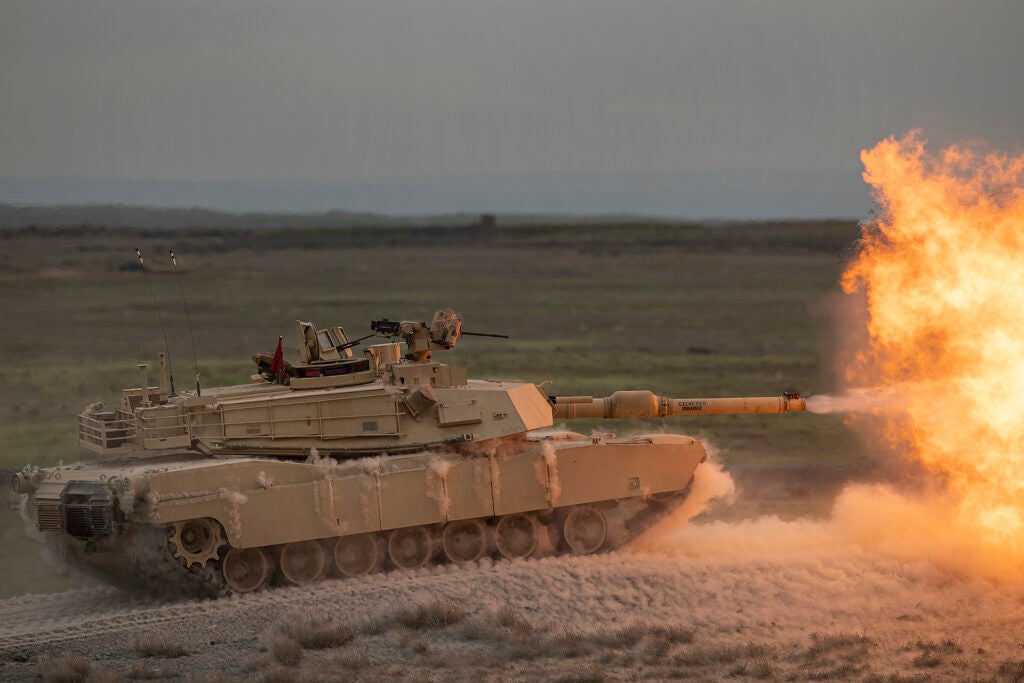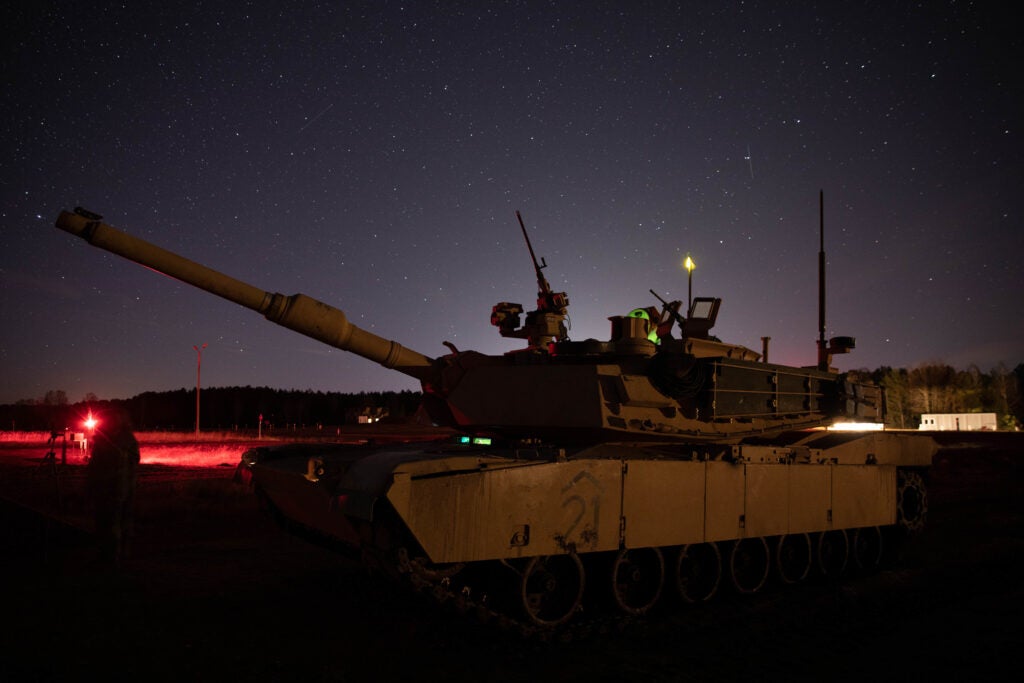As the world has watched the Russian military stumble again and again in its invasion of Ukraine, its inability to effectively use and sustain its tanks has been clear as day. Russian armor has been defeated by muddy terrain, tanks have had their turrets blown off, and others have been left on the side of the road as they run out of fuel mid-invasion.
The problems have been so severe that the question of tanks’ usefulness has resurfaced once again.
But U.S. armor experts don’t buy it. Instead, they argue that it isn’t a question of whether tanks should be used, but how they’re used in coordination with other elements of the military. This concept is known as combined arms and it’s one that Russia hasn’t seemed to grasp.
“A tank, in general, is — for ground stuff — the most lethal thing you can put on the battlefield,” Lt. Col. John Dolan, the chief of tactics at the Maneuver Captain’s Career Course at Fort Benning, Georgia, told Task & Purpose last week. “It’s got a ton of armor, it can go really fast, it can see everything … I don’t think the time of the tank has passed.”
But Doland also said that using “any one thing by itself” isn’t enough. The combined arms aspect of military strategy — using an infantry force alongside a military’s tanks, for example — is critical.

“Using just infantry is equally not effective, because they can’t move fast enough and they’re not very well protected, it’s an artillery barrage away from being destroyed,” he said. “You’ve got to use everything together to support each other. You take the best of all these types and put it all together, and it can kick some ass.”
Subscribe to Task & Purpose Today. Get the latest in military news, entertainment, and gear in your inbox daily.
The question of whether or not tanks are “obsolete” is a question “military analysts have been asking since they first appeared on the battlefield,” history professor Stephen Mihm wrote at Bloomberg. Going back as far as World War I when the tank was introduced, military officials pondered if they would ever be used again after the war, Mihm wrote, not anticipating the major role they would play in World War II.
Quoting a British military historian’s observation in 1960, Mihm wrote: “Time after time during the past 40 years the highest defense authorities have announced that the tank is dead or dying. Each time it has risen from the grave to which they had consigned it — and they have been caught napping.”

That sentiment doesn’t seem to have changed since, as the war in Ukraine has spurred questions about what role tanks will have in future conflict. Especially considering the Marine Corps’ decision in 2020 to get rid of its tanks as it looks toward a possible conflict with China, making clear that the force would leave that capability to the Army.
But the idea that tanks won’t have a place in future wars is incorrect, said Maj. Gen. Patrick Donahoe, commander of the Maneuver Center of Excellence at Fort Benning. They absolutely will, he said, but they won’t be working alone. As Doland said, a “tank is really good, but a tank by itself, in some woods? Not really good.”
Learning how to fight with combined arms is “what we do at Fort Benning,” Donahoe said. It’s one of the primary reasons the Infantry Basic Officer Leader Course (IBOLC) and Armor Basic Officer Leader Course (ABOLC) are both at Fort Benning, he said: so future leaders of those branches can “develop even closer coordination,” and have “an innate understanding of one another.”

“[Combined arms] is what prevents the lunacy we’re watching of what the Russian Army is doing,” Donahoe said. “I mean, you’ve just got to watch some of the videos of their forces being ambushed — they apparently are a poorly trained army that cannot fight as a combined arms team.”
Donahoe also pointed to a sentiment written by T.R. Fehrenbach in the book This Kind of War, explaining that to complete what militaries set out to do, they have to put soldiers “in the mud.”
“He makes this argument about hey we can fly over enemy terrain forever,” Donahoe said. “We can pulverize it from above, we can nuke it, we can turn it to ash, but the only way you can control it is by putting men and women on the ground.” Indeed, when looking at Ukraine’s resistance, there has been no shortage of requests for aircraft. But there have also been requests for tanks, small arms, ammunition, body armor and helmets, and armored vehicles — things that would go into soldiers’ hands and help those on the ground keep up the fight.
When considering what’s gone wrong for Russia in Ukraine, it isn’t just the tanks, Donahoe said. There have also been videos of Russian aircraft being shot down, and soldiers being killed on the battlefield, but nobody has proclaimed that it signals the “demise of the jet aircraft” or that the day of the infantryman “is gone,” he said. Ultimately, the Russian military has exposed itself as a “poorly trained, logistically fragile, poorly led army,” which has regularly run into issues that the United States Army understands and trains leaders to overcome, Donahoe said.
As for all this doomsaying over tanks? Donahoe, for one, doesn’t buy it.
“There is nothing in the technological developments today that will unseat the tank-infantry team as the king of the killing ground.”
What’s new on Task & Purpose
Want to write for Task & Purpose? Click here. Or check out the latest stories on our homepage.
